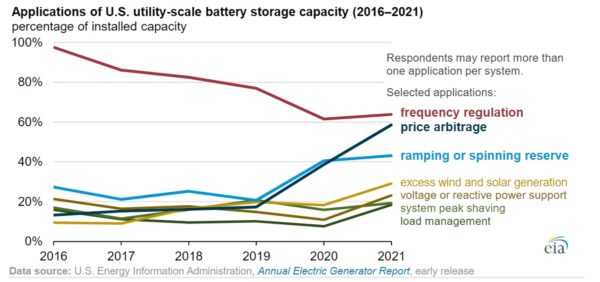The capacity of utility-scale battery storage tripled in the United States between 2020 and 2021, growing from 1.4 GW to 4.6 GW, according to the early release Annual Electric Generator Report by the US Energy Information Administration.
In a survey that asked respondents how they use batteries, the most common use is frequency regulation, which helps maintain the grid frequency of 60 cycles per second. This enhances grid reliability because deviations from that frequency could lead to power surges or other types of grid instability.
The survey found that the biggest change in use is that more systems are being used to store electricity when prices are low, and discharge when prices are high, known as price arbitrage.

During 2021, 59% of the 4.6 GW of utility-scale US battery capacity was used for price arbitrage, up from 17% in 2019. In certain markets, price arbitrage is more common than in others. For example, more than 80% of the battery capacity added in 2021 in the California Independent System Operator (CAISO) service territory was used for price arbitrage.
Batteries are also being used to counter excess wind and solar generation, as they absorb excess solar or wind generation when demand is low and then discharge it later when demand is high. More than 93% of the battery capacity that came online in 2021 was co-located with solar power plants.
